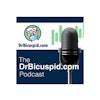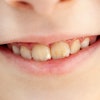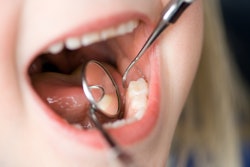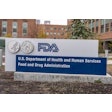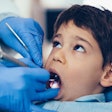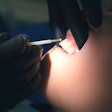More than one-third of children do not receive dental care, but improving public insurance and simplifying enrollment may help address this, according to a study published recently in the Journal of the American Dental Association.
Furthermore, factors like neighborhood safety and financial and food support may influence oral health care use, the authors wrote.
“Policies that expand insurance access and address financial hardship may improve oral health equity by means of increasing oral health care use among vulnerable young children,” wrote the authors, led by May Oo, MS, MPH, of the Weitzman Institute in Washington, DC (JADA, November 13, 2025).
To explore dental care utilization, a cross-sectional study using 2022-2023 U.S. National Survey of Children’s Health data was conducted to examine enabling factors linked to oral health care use among 34,622 children age 5 and younger. The survey used a multistage sampling design to produce nationally representative estimates of children’s health and well-being, they wrote.
Households were randomly chosen from the U.S. Census Bureau, and one child per household was selected to participate. Using Andersen’s Behavioral Model of Health Services Use, the study measured whether each child had a dental visit. Enabling factors such as neighborhood safety or support, food or cash assistance, food security, financial stability, and insurance status were evaluated while predisposing and need factors were controlled for.
Across the sample, 35.8% of children had no oral healthcare visit from 2022 to 2023. Children in families receiving food or cash assistance had higher odds of getting oral healthcare (odds ratio [OR] 1.26; 95% confidence interval [CI], 1.07 to 1.48; p = 0.01), while those whose families struggled to pay medical bills had lower odds (OR, 0.83; 95% CI, 0.69 to 0.99; p = .04), they wrote.
Compared with uninsured children, those with private insurance (OR, 2.36; 95% CI, 1.65 to 3.38; p < 0.001) or public insurance (OR, 2.64; 95% CI, 1.8 to 3.88; p < 0.001) were far more likely to have a dental visit. Neighborhood support, safety, and food security were not significant in adjusted models, but older age (OR, 2.01; 95% CI, 1.91 to 2.12; p < 0.001), higher household income (OR, 1.45; 95% CI, 1.22 to 1.72; p = 0.002), and higher caregiver education (OR, 1.82; 95% CI, 1.50 to 2.2; p < 0.001) were associated with greater oral healthcare use.
However, the study had limitations. The data relied on parent or caregiver reports, which may have introduced recall or reporting bias, the authors added.
“Policy makers should continue efforts to expand public insurance coverage and simplify enrollment processes, while also raising awareness of existing dental benefits, particularly among families with young children experiencing financial hardship, such as difficulty paying medical bills,” they concluded.


